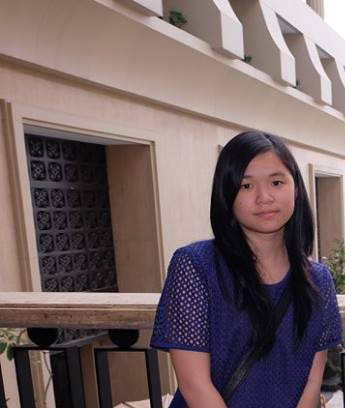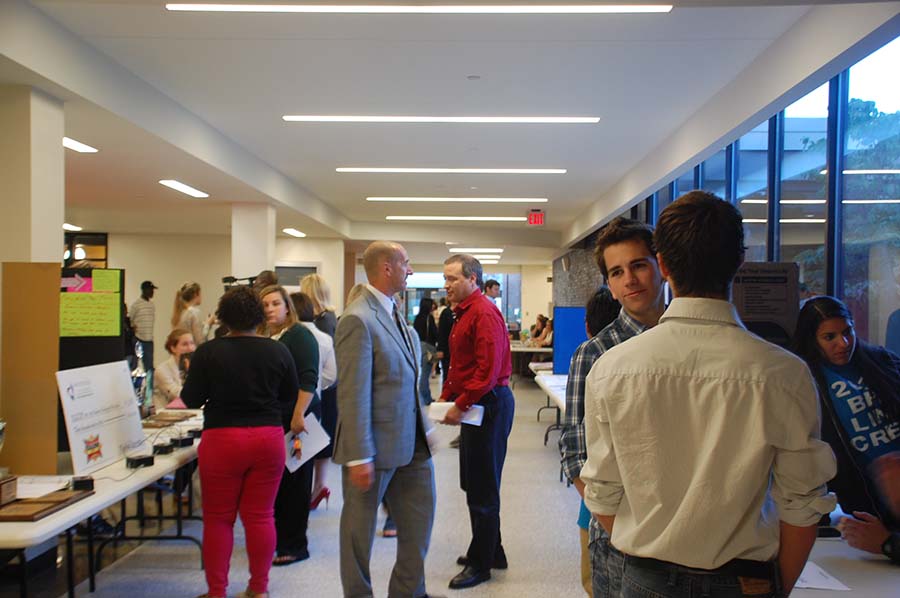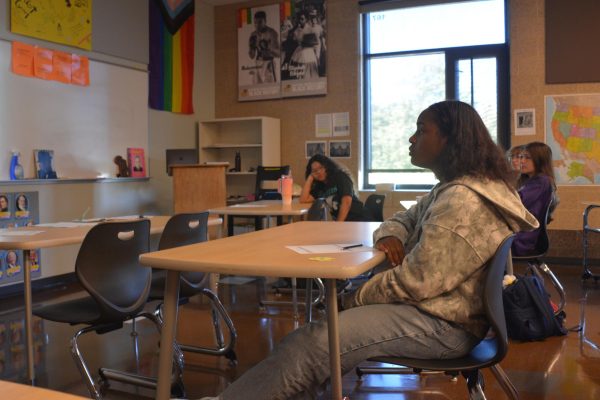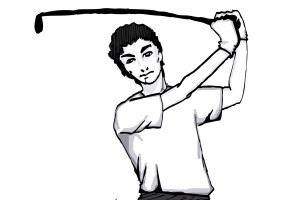Student Clubs Scramble for New Recruits
Before the first model UN meeting, senior Pauline Keselman took a proactive approach to recruitment.
“I went around to the lunch tables and talked to the freshmen and asked them to tell their friends,” she said.
Keselman feels it is crucial to get to know the students she is trying to recruit.
“I’m a big fan of just face-to-face contact,” she said. “I think that’s the most effective way to get people to come, and it’s personalized… they feel welcome that way.”
Model UN is not the only club that has been been focusing on recruitment lately. It’s the time of year that many student clubs try to recruit new members.
BHS has roughly 625 students and over 30 clubs, ranging from nationally competitive teams, discussion groups and community volunteer programs.
With many students already overwhelmed with academic and athletic demands, there is tough competition between clubs for recruits who are willing to invest the time required into researching foreign relations, building a robot or snapping pictures for the yearbook.
Keselman’s approach was informed by her own experience.
“When I was a freshman, upperclassmen came up to me and made me feel welcome… and invited me personally, so that’s why I’m such a fan of the face-to-face recruitment,” she said. “I think it’s a lot more effective when you share that bond.”
And the approach worked.
“For the intro meeting, … we had a great turnout,” she said. “We had around 25 [to] 30 people, and a majority of [them] were freshmen. We’re really excited about that.”
The math team is less aggressive when it comes to recruitment, relying on morning announcements.
“There are a couple of signs in the hallways,” senior Rachelle Magaram said. “Math classes are told about math team.”
On the other hand, the academic challenge has been struggling to find new team members.
“Our recruitment’s been kind of spotty, because we’ve had a few different advisers,” senior Lin-ye Kaye said. “Generally we’ll do the open house…and put flyers up around the school.”
“As of right now we’re just stuck with the same people we had last year,” she said.
Many students continue a middle school activity as they move up to the high school.
“We were affiliated with the middle school. They had an informal quiz bowl team,” Kaye said.
Despite busy schedules, high schoolers like being involved with extracurriculars because of their long-term benefits.
Students also tend to join clubs for the sense of community.
“I have to feel like I’m helping a team, or helping work towards something,” Kaye said.
With the variety of activities that clubs orchestrate, there is a lot of opportunity for education outside of the classroom.
“[You’ll] learn how to interact with people and organize events, life skills that you need for college and jobs,” Keselman said.
Students tend to join clubs their friends are in. In those cases, the level of commitment may also be higher.
Based on an unscientific survey of 27 students involved in clubs, 17 said friends in the club were part of the reason they joined. In many cases, club leaders recruited friends to join.
Of 16 Science Olympiad members surveyed, eight joined during their freshman year.
Freshman year seems to be the time where the foundations are created for a long career in a certain activity. At the same time, it’s never too late to find a new interest and pour your heart into it.
“There are always opportunities for upperclassmen to get involved,” Keselman said.
The BHS administration strongly encourages kids to get involved, and one of those ways is through the annual activities fair.
The event is intended to give students more exposure to the different activities the high school has to offer and to allow clubs to spread the word about themselves and find new students to replace graduated seniors.
However, many students found that this year on the morning of Sept. 2, the activities fair wasn’t very effective.
“I think the fact that they made it in the morning on Wednesday and [didn’t make] it mandatory didn’t give students the motivation to go,” Keselman said.
Student activities coordinator Craig Alexander is considering shifting the activities fair to the cafeteria setting.
Sign up sheets for extracurriculars are posted after the fair every year so that clubs can see who’s interested in joining.
Alexander found that this was a good place for students to talk to each other about the activities and suggested he might set up display tables in the future.
“I’m thinking about… making a formal structure to actually get kids out of class during lunch periods so that the organizers of different things are there in case people have questions,” he said.
Student leaders generally believe that the school staff does a lot to help the recruitment process. At the same time, they have some ideas for how faculty could do more.
One of the ideas is sending out more text message reminders using the application Remind regarding activities in general.
“Kids nowadays are always on their phones; I think that’s one of the best ways to get [the message] across,” Keselman said.
Another suggestion was updating the BHS website with new descriptions of the clubs.
In a similar vein, Kaye suggested that the school send out an email detailing the clubs, listing information that would have been discussed at the activities fair.
“By sending out an email, people can choose to take the information or not,” she said.

Senior Clarissa Djohari is currently the News Editor and a Layout Editor for The Beachcomber. She is most interested in reporting the students' perspective...





![“My parents have always said that education is important. My parents are Chinese immigrants, I'm Chinese American, [and that's a] value that has always been ingrained in our community,” said Senior Lyndia Zheng, pictured with Tony Zheng](https://bcomber.org/wp-content/uploads/2025/10/DSC_4244-600x400.jpg)






